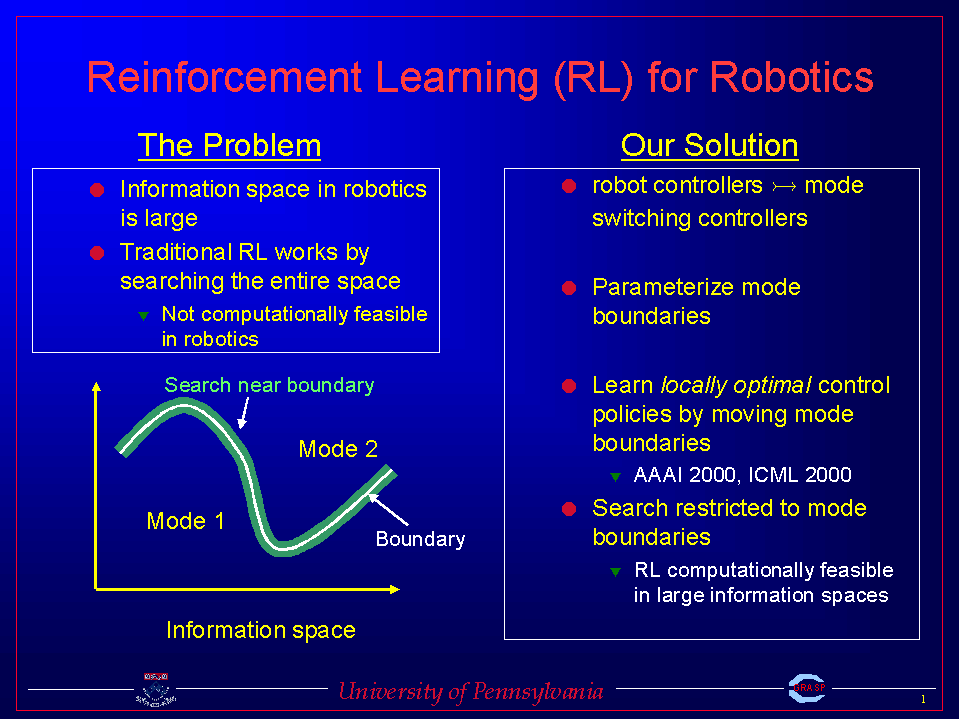|
Reinforcement
Learning
Greg
Grudic, Lyle
Ungar, Vijay Kumar
Traditional instantiations of RL algorithms
appear incompatible with robotics: successful RL implementations are
typically characterized by a) small discrete state spaces, b) hundreds
of thousands of learning runs are used, and c) exploration is done using
stochastic search. In comparison, robot control is characterized by
a) large, noisy continuous state spaces, b) only limited learning runs
are possible, and c) random actions can result in dangerous
or expensive outcomes. We are currently developing new RL algorithms
that are specifically intended for large continuous state spaces
of the types typically found in robotics. Our first results include
1) Boundary Localized Reinforcement Learning (BLRL)
and 2) Action Transition Policy Gradient (ATPG).
BLRL
develops a policy gradient framework for mode switching in high dimensional
state spaces, and shows that search can be made computationally tractable
even in very high dimensional state spaces through the use of deterministic
modes. Finally, BLRL
shows the locally optimal mode switching policies can by found by restricting
search to near mode boundaries.
ATPG
is a policy gradient algorithm that is theoretically guaranteed to find
locally optimal policies and can be applied to both deterministic mode
switching controllers and stochastic controllers. By restricting policy
gradients (PG) estimates to when relative estimates of the value of
executing actions is available (which in continuous state spaces corresponds
to when the agent changes actions), ATPG
converges orders of magnitude faster than traditional PG algorithms
such as REINFORCE, as well as newer algorithms which use function approximation
techniques to improve convergence.

|



